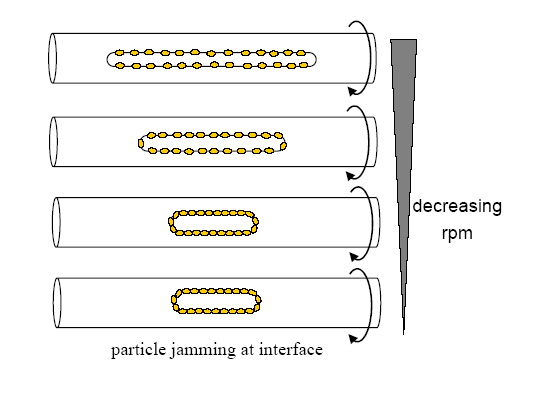288f Controlled Jamming of Particle-Laden Interfaces Using a Spinning Drop Tensiometer
Partially-wettable particles often adsorb nearly irreversibly at liquid/liquid interfaces. Under conditions when the interface is crowded with a particle monolayer, "jamming" can occur, i.e. the particles lose mobility, and the monolayer behaves similar to a 2-D glass. We studied the jamming of iron oxyhydroxide (FeOOH) particles adsorbed at the interface between ethylene glycol and mineral oil using a spinning drop tensiometer (SDT). A particle-covered drop of mineral oil suspended in ethylene glycol was spun about a horizontal axis in the tube of a spinning drop tensiometer. The equilibrium shape of this drop is roughly cylindrical, and results from a balance between interfacial and centrifugal forces. By varying rotational rates (and hence centrifugal forces), the SDT allows precise control over the dimensions of the cylindrical drop, and hence its interfacial area. Therefore, as interfacial area is reduced, jamming can be induced in a controlled fashion. This procedure mimics a Langmuir trough, but without any physical barriers to compress the interface. We show that as the rotational rate is reduced, the drop retracts as expected until at some surface area is reached. With further decrease in rotational rate, the drop stops retracting, indicative of particle jamming. Experiments on drops with different particle loadings show that that jamming occurs at a specific value of interfacial particle concentration. Calculations suggest that the jamming concentration roughly corresponds to complete coverage of interface by particles. Finally, similar experiments at the mineral oil/silicone interface show altogether different behavior: high-concentration particle patches coexist with nearly particle-free patches. This suggests that interparticle repulsion is weak and hence monolayer behavior is dominated by interparticle attraction.
